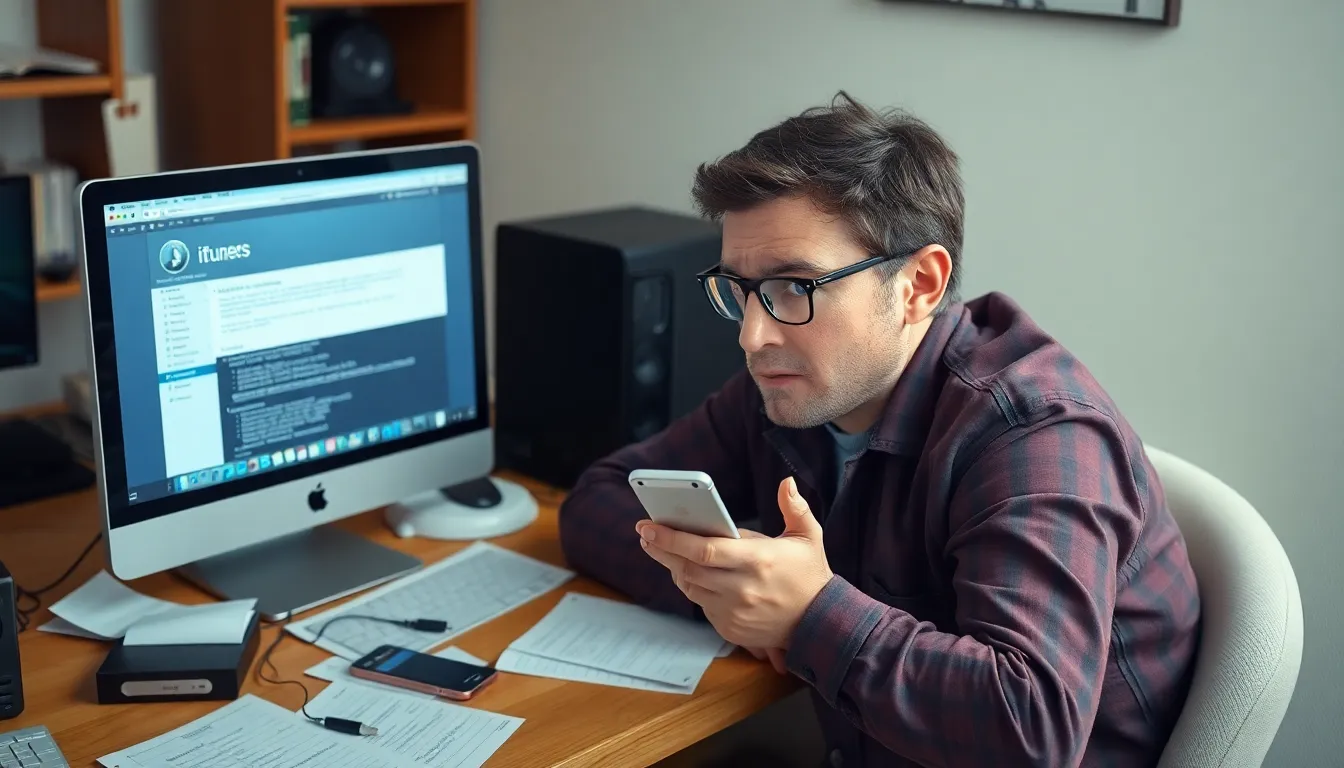Ever find yourself staring at your iPhone, wondering if it’s plotting against you? Maybe it’s time to disable it and reclaim your sanity. Luckily, iTunes can come to the rescue, transforming your tech turmoil into a smooth sailing experience.
Whether you’re dealing with a stubborn phone or just need a break from the endless notifications, learning how to disable your iPhone with iTunes is a game-changer. In just a few simple steps, you can hit the reset button on your device and enjoy a moment of peace. So grab your favorite beverage, and let’s dive into the world of iTunes magic—where disabling your iPhone is as easy as pie (or at least easier than finding your missing sock).
Table of Contents
ToggleOverview of Disabling iPhone
Disabling an iPhone can help users take a break from distractions. Utilizing iTunes provides a reliable method for this process. Accessing iTunes on a computer offers a straightforward way to manage the device. Users can reset their iPhone settings without losing personal data.
iTunes connects to the iPhone, allowing users to initiate the disabling process. Once connected, selecting the device within iTunes is crucial. Options for backup or restore may appear, assisting in data management. Following the prompts in iTunes leads to a simple disabling procedure.
After initiating the reset, the iPhone remains inoperable until the process completes. Users may see messages on the screen that confirm the disabling is underway. This ensures peace of mind temporarily from constant notifications and distractions.
Completing this process through iTunes means the phone takes longer to disable than turning it off manually. Users find that following the listed steps leads to a smoother experience. Relying on iTunes safeguarding personal data during this process becomes a beneficial approach.
Staying informed about the steps involved ensures a successful disablement. Contingencies exist; users should prepare for potential interruptions. Following these outlined steps minimizes frustrations and simplifies their experience with technology.
Preparing for the Process

Preparing for disabling an iPhone requires careful steps to ensure a smooth experience. Backup and compatibility are two essential components to consider.
Backing Up Your Data
Backing up data protects important files and settings. Users can choose iCloud or iTunes for this purpose. iCloud offers automatic backups when connected to Wi-Fi, while iTunes provides a manual backup option through a computer. It’s crucial to confirm that recent backups include photos, contacts, and apps. Restoring from a backup later ensures that no data is lost during the disabling process.
Ensuring Compatibility
Ensuring compatibility between the iPhone and iTunes is vital for a successful disabling process. Make sure to check that the latest version of iTunes is installed on the computer. Apple’s support site provides information on the compatible iOS versions with each iTunes release. Connecting the iPhone to a computer also requires a reliable USB cable. Keeping the operating system updated on both the device and iTunes helps prevent potential issues during the process.
Steps to Disable iPhone with iTunes
Disabling an iPhone using iTunes involves a few straightforward steps. Following these instructions ensures a successful reset of the device.
Connecting Your iPhone
To begin, connect the iPhone to a computer using a reliable USB cable. The connection must be secure to avoid disruptions. Opening iTunes is the next step after connecting. Users should ensure that the latest version of iTunes is installed on their computer. An outdated application may lead to compatibility issues. Once iTunes is open, the connected iPhone will appear on the interface.
Using iTunes to Disable
After the iPhone is recognized, click on the device icon in iTunes. This action reveals various options for managing the device. Users can choose between backing up the phone or initiating a reset. Selecting the “Reset” option leads to further prompts confirming the action. This prompt may include messages related to data preservation. Confirming the reset starts the disabling process, temporarily removing access to the device.
Completing the Process
The iPhone will enter a standby mode during the reset. This mode remains active until the process is fully complete. Users can monitor the progress in iTunes, which indicates when the reset finishes. After completion, the device becomes accessible again. Restoring from backup occurs if users have opted to retain data. Taking note of these steps fosters a smoother and more effective disabling experience.
Troubleshooting Common Issues
Common issues may arise when disabling an iPhone with iTunes. Understanding these problems can streamline the process and enhance user experience.
Connection Problems
Connection problems might disrupt the disabling process. Users should ensure the USB cable is functioning and securely connected to both the iPhone and the computer. Checking for signs of wear or damage on the cable can help avoid interruptions. Restarting both the iPhone and the computer may also resolve glitches. Additionally, confirming that the correct USB port is being used will strengthen the connection. If problems persist, trying a different cable or USB port can solve persistent issues. Ensuring that both devices recognize each other is crucial for a smooth experience.
iTunes Errors
iTunes errors often hamper the disabling process. Users encountering error messages should first check for updates to the iTunes software, as using the latest version reduces the likelihood of issues. Restarting iTunes can sometimes clear temporary glitches. Reviewing device compatibility also provides insight; not all iPhone models function seamlessly with every iTunes version. If an error occurs, consulting the Apple support website for specific error codes offers targeted solutions. Following the recommended troubleshooting steps will enable a smoother process, enhancing the overall experience when disabling the iPhone.
Disabling an iPhone with iTunes offers a practical solution for those seeking a break from constant distractions. By following the outlined steps users can reset their devices while keeping personal data intact. This method not only provides temporary relief but also ensures a smoother experience when reconnecting later.
Taking the time to back up essential data and ensuring compatibility with iTunes can make the process seamless. With the right preparation and troubleshooting tips users can navigate any challenges that arise. Embracing this approach allows individuals to reclaim their focus and enjoy moments of peace away from their devices.









